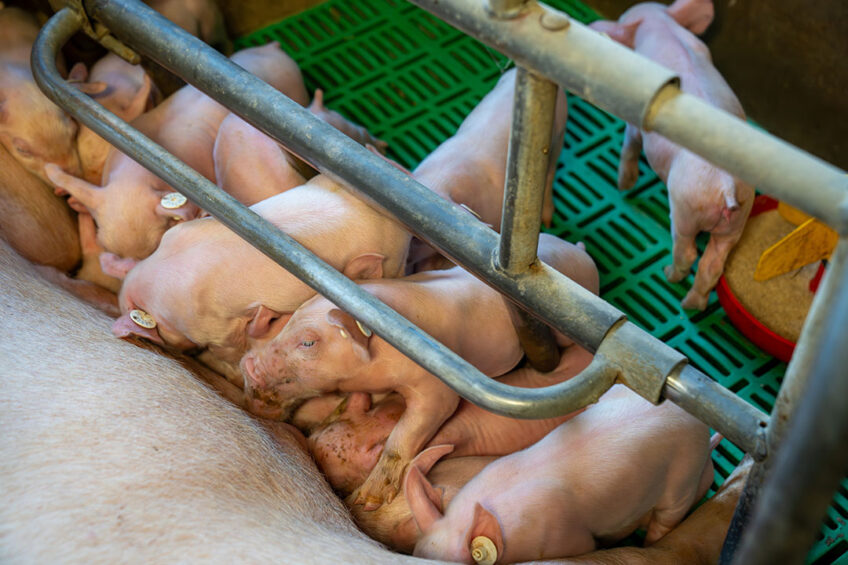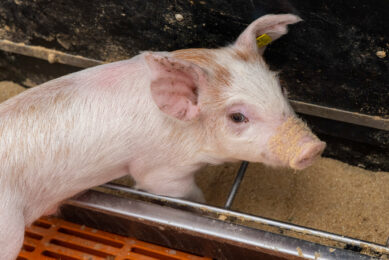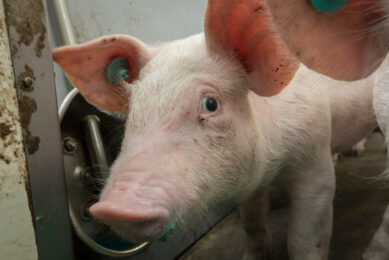Caffeine and glucose improve growth of low birthweight piglets

Australian researchers determined whether supplementing caffeine and/or glucose to piglets at birth is beneficial for their viability, growth, thermoregulatory ability, and survival.
The risk of piglet mortality is highest during the first 3 days of life, especially for low birthweight piglets. Therefore, interventions are necessary to support pre-weaning survival. Caffeine is a methylxanthine that improves neurological impairment, provides neuroprotection to neonates, improves metabolic variables and growth of neonates. Glucose injections increase piglet body weight during their first 21 days.
Data collection
For this study, the researchers used 38 multiparous Large White x Landrace sows and their litters. They group housed sows during gestation and moved them into conventional farrowing crates 5 days prior to their expected due date.
The team fed sows a commercial lactation diet formulated to provide energy, crude protein, lysine, and crude fiber. They monitored sows throughout farrowing and at birth. Then, they tagged a total of 398 piglets for individual identification. In addition to this, they weighed them, recorded their sex, and gave them one of the following oral treatments:
6 ml saline;
6 ml saline with 30 mg caffeine;
6 ml saline with 300 mg glucose;
6 ml saline with 30 mg caffeine and 300 mg glucose.
Data recorded for each litter included the total number of piglets born, born alive, or stillborn, and farrowing duration. The team recorded piglets’ rectal temperatures at 4 and 24 hours after birth and their weight at birth and at 1, 3, and 18 days of age. They estimated colostrum intake, and measured the time it took piglets to reach the udder following birth. All piglet fosters and mortalities including date and reason were recorded from farrowing to weaning.
Impact of caffeine and glucose
The treatments had no effects on piglets to reach the udder following birth, rectal temperatures at 4 and 24 hours, colostrum intake, and weight at birth or 1 and 18 days of age. However, it might be due to a single caffeine and/or glucose bolus administered with a relatively short-term effect on blood glucose content and piglet thermoregulatory ability.
Interactions between treatment and birth weight
Piglets born light grew significantly less between 1 and 3 days of age when supplemented with caffeine or glucose at birth. Low birthweight piglets have a greater surface area to volume ratio and so a greater propensity to lose heat. This would require energy to correct. However, those born heavy grew significantly faster if they were supplemented with glucose and caffeine combination. This suggested that the hypoglycemic state induced by caffeine would be compensated for by the addition of a glucose supplement when given in combination.
In addition, when caffeine administered in isolation may compromise piglet survival via an increased metabolic activity and energy expenditure resulting in hypoglycemia. Light piglets treated with caffeine at birth grew significantly less than all other treatment groups from 1 and 18 days of age. Medium and heavy piglets were not affected by any of the birth treatments. In addition, most mortalities occurred in the first 3 days, with the least number of mortalities occurring between day 3 and 18.
Conclusion
The improvement of pre-weaning piglet survival will require a focus on the low birth weight/lower viability piglets. The authors concluded that the combination of caffeine and glucose has the potential to improve neonatal performance However, both a rapid and a more prolonged energy support, in addition to improvements in piglet warming is needed for greater effect.











